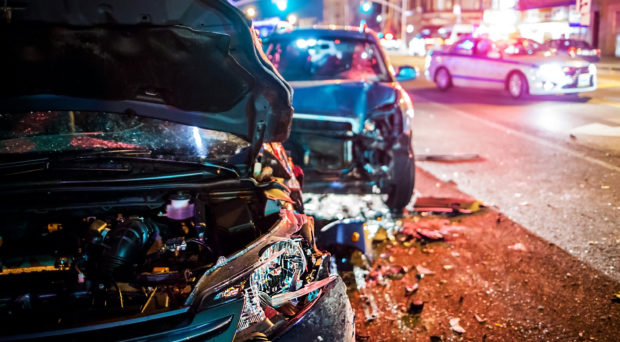
This blog has been cross posted form SpringerOpen blog
Managing Editor, Ms. Barbara Lang: Stanford, your paper “Interaction of marijuana and alcohol on fatal motor vehicle crash risk: a case–control study” was the 2017 winner of the Jess Kraus Award in Injury Epidemiology-Congratulations! Could you tell us what this study is about?
Mr. Stanford Chihuri: Thank you! It is a big honor to receive the Jess Kraus Award. The study was a case-control analysis to assess the role of concurrent use of alcohol and marijuana in fatal motor vehicle crashes.
ME: Why is it important to study the effects of marijuana use on driving safety?
SC: Marijuana has become more accessible and is increasingly used as the drug of choice. As of July 2018, 32 states and Washington DC have legalized marijuana for medical use and eight states have legalized marijuana for recreational use. More states are considering passing similar legislation. Although driving under the influence of marijuana is prohibited across the states, there is a paucity of scientific evidence about the adverse effects of marijuana use, particularly concurrent use of marijuana and alcohol on driving safety.
ME: What does this study add to the research literature on drugged driving?
SC: This study adds to the growing literature that marijuana and alcohol are each associated with significantly increased risks of fatal crash involvement. More importantly, this study adds new findings for understanding the interaction of marijuana and alcohol on fatal motor vehicle crash risk.
ME: What is the most striking finding from your study?
This finding implies that concurrent use of marijuana and alcohol by drivers is especially dangerous.
SC: When marijuana and alcohol are used together, there exists a positive synergistic effect on fatal crash risk on the additive scale. In other words, the combined effects from concurrent use of marijuana and alcohol and marijuana are more than the sum of the net effects of both substances. This finding implies that concurrent use of marijuana and alcohol by drivers is especially dangerous. The underlying biological basis for the marijuana-alcohol interaction has been well documented in experimental studies.
ME: What are the implications for public policy to reduce the adverse health consequences of legalizing marijuana for medical and recreational use?
SC: Public policy legalizing marijuana should incorporate evidence-based measures to mitigate the adverse health consequences of increased use of the substance, such as substance use disorders, motor vehicle crashes, occupational injuries, and problems related to prenatal exposure and childhood exposure to marijuana.
State governments should develop and implement effective public health programs before marijuana laws become effective. These public health programs should be adequately financed through tax revenues and other sources. Educating the public, patients, parents, students, and policymakers on the adverse health consequences of marijuana would be the first step.
ME: Marijuana stays in a person’s system longer than alcohol, how did you address this discrepancy?
SC: Indeed THC (the active ingredient in marijuana) stays in the system longer (1–3 days) than alcohol. With regards to alcohol, impairment can be readily determined based on the blood alcohol concentration (BAC). However, for THC, a positive test may not always indicate impairment because the substance could stay in the body for up to several days, and blood THC level does not correlate with functional impairment as well as BAC. The pharmacokinetics of marijuana poses a special challenge to researchers and policy makers.
ME: What are the major unanswered questions regarding marijuana use and driving safety?
SC: There is a lack of epidemiologic research on the dose-response relationship between THC and crash risk. In other words, there are no empirical THC concentrations that may be consistently linked with impairment. Current cut offs (e.g., 2–5ng/ml) are based on experimental studies which do not reflect real driving situations. In addition, there is no comprehensive and rigorous appraisal of the oral fluid and breath sample testing devices that are currently available or under development. Validating these devices could allow law enforcement officers to accurately estimate blood THC concentrations during traffic stops.
ME: Any other important messages that may help save lives?
SC: Marijuana use in adolescents is quite common. Before parents hand over the car keys to their teenagers, they should have conversations on the dangers of mixing alcohol, marijuana, and driving. Motor vehicle crashes are the number one cause of death for teenagers in the United States and impaired driving by alcohol and drugs, distraction, and fatigue is the most important reason behind this tragic yet factual statement.
Comments